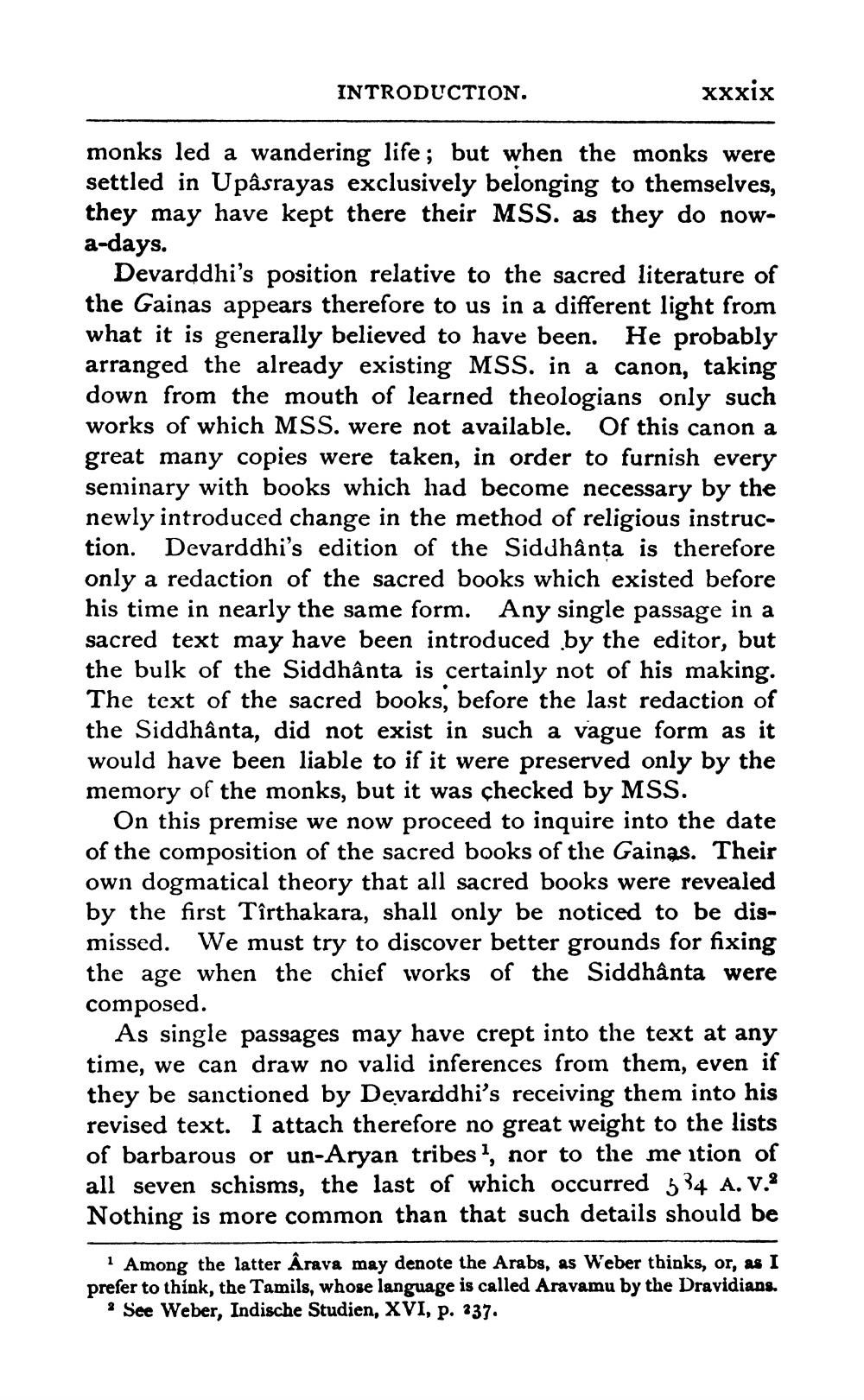________________
INTRODUCTION.
xxxix
monks led a wandering life; but when the monks were settled in Upâsrayas exclusively belonging to themselves, they may have kept there their MSS. as they do nowa-days.
Devarddhi's position relative to the sacred literature of the Gainas appears therefore to us in a different light from what it is generally believed to have been. He probably arranged the already existing MSS. in a canon, taking down from the mouth of learned theologians only such works of which MSS. were not available. Of this canon a great many copies were taken, in order to furnish every seminary with books which had become necessary by the newly introduced change in the method of religious instruction. Devarddhi's edition of the Siddhânța is therefore only a redaction of the sacred books which existed before his time in nearly the same form. Any single passage in a sacred text may have been introduced by the editor, but the bulk of the Siddhânta is certainly not of his making. The text of the sacred books, before the last redaction of the Siddhânta, did not exist in such a vague form as it would have been liable to if it were preserved only by the memory of the monks, but it was checked by MSS.
On this premise we now proceed to inquire into the date of the composition of the sacred books of the Gainas. Their own dogmatical theory that all sacred books were revealed by the first Tîrthakara, shall only be noticed to be dismissed. We must try to discover better grounds for fixing the age when the chief works of the Siddhânta were composed.
As single passages may have crept into the text at any time, we can draw no valid inferences from them, even if they be sanctioned by Devarddhi's receiving them into his revised text. I attach therefore no great weight to the lists of barbarous or un-Aryan tribes ?, nor to the me ition of all seven schisms, the last of which occurred 534 A. V.? Nothing is more common than that such details should be
1 Among the latter Ârava may denote the Arabs, as Weber thinks, or, as I prefer to think, the Tamils, whose language is called Aravamu by the Dravidians.
See Weber, Indische Studien, XVI, p. 237.




